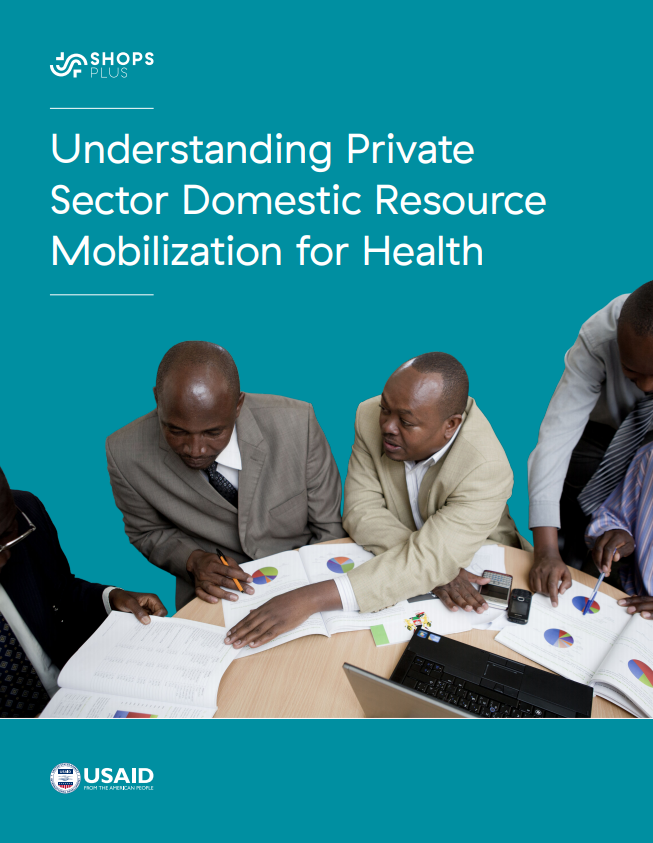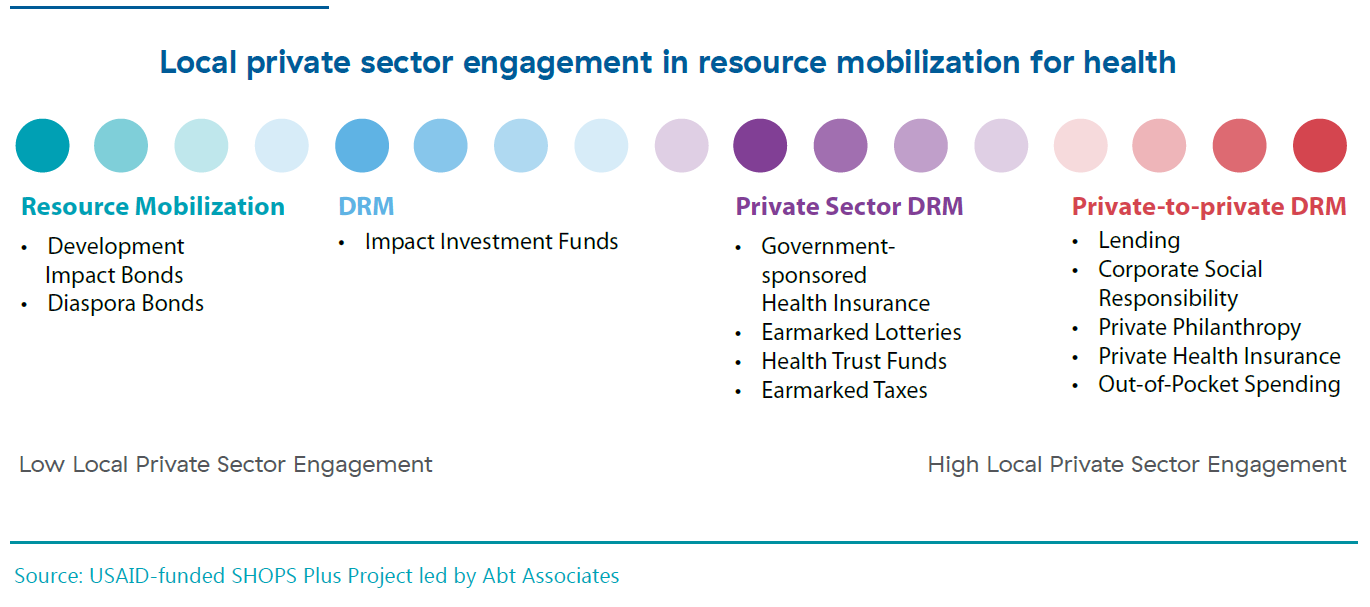Looking beyond the public sector to raise funds for health

Domestic resource mobilization has been called “critical for the future of development.” Traditionally, this concept has focused on the public sector as primarily responsible for raising and managing funds for health, often through taxes.
There is growing interest to look beyond government for additional revenues as donors reduce funding for health programs, demand for health care grows, and countries become more self-reliant.
“We wanted to provide clarity on the oft-murky topic of the private sector’s role in domestic resource mobilization for health,” says Rachel Rosen DeLong, a health financing expert at Abt Associates and co-author of a new SHOPS Plus publication, Understanding Private Sector Domestic Resource Mobilization for Health. “The private sector can be involved to varying degrees, and we show this using examples from several countries. We also propose ways that donors can help.”
DeLong co-authored the primer with Jeanna Holtz, health financing director of SHOPS Plus.
“The private sector is often cursorily mentioned in discussions about domestic resource mobilization for health. However, there is little consensus about what its involvement should look like,” said Holtz.
A definition
The primer defines private sector domestic resource mobilization for health to include any mechanism or process that raises new funds for health from the local private sector. Funding sources may include, but are not limited to, corporations, faith-based organizations, philanthropies, private capital investors, NGOs, households or individuals, and banks.
The primer discusses how the private sector can play various roles in resource mobilization, and shares insights across the spectrum of local private sector engagement in raising funds for health (see figure).

The authors identified several examples of private sector domestic resource mobilization for health, including lotteries, trust funds, taxes and levies, corporate social responsibility, lending, private capital investments, health insurance contributions, out-of-pocket payments, and philanthropy.
Role for donors
Private sector domestic resource mobilization does not happen in isolation from broader efforts to strengthen the health system and advance toward universal health coverage. Donors can help several ways, including by introducing health enterprises to potential investors and lenders, mitigating the risk associated with investing in or lending money to health enterprises, and providing technical assistance to private health providers, financial institutions, and other companies.
Learn more about our work in health financing.
Learn more about our work in provider access to finance.